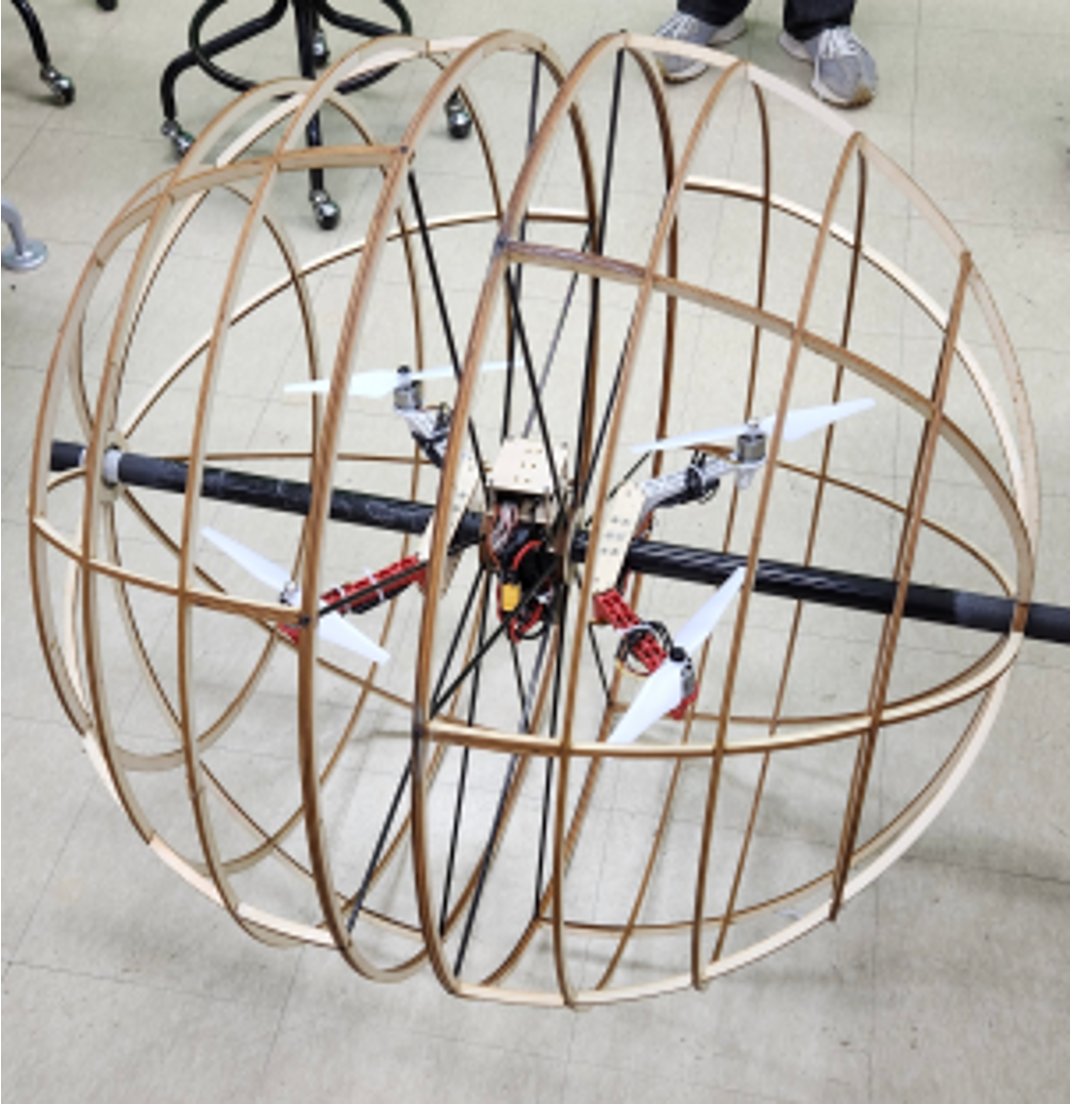
We designed, implemented, and experimentally validated a quadrotor system incorporating a dual-hemisphere shell structure. First, we verified the feasibility of both ground and aerial maneuverability of the developed hardware. By enabling simultaneous operation in both domains, the proposed system overcomes conventional quadrotor path constraints, making it suitable for missions requiring low detectability. Next, we conducted Von Mises stress simulations to assess the structural robustness of the hardware. The stress analysis confirmed that the durability of the hemisphere passive wheel was enhanced by employing a linear spoke design. By addressing the structural limitations of previous designs, we proposed a hardware system capable of stable operation even under external forces such as obstacles. Furthermore, we evaluated the system’s obstacle traversal capabilities in both ground and aerial environments. Ground tests confirmed stable traversal over obstacles such as pavement blocks, while aerial tests assessed obstacle crossing during forward flight by measuring the pitch angle variation using an IMU sensor. The results demonstrated that the quadrotor maintained stable control with minimal angular deviation, ensuring impact resilience and successful aerial obstacle traversal. In addition to obstacle traversal, the two-axis rotating hemisphere passive shell significantly improves obstacle avoidance capabilities compared to previous designs that support only single-axis rotation. The proposed hardware is expected to be highly applicable for takeoff in extreme environments and various specialized operations, including reconnaissance and infiltration. Beyond military applications, it also has potential for deployment in disaster scenarios such as mountain rescues and wildfire response.
